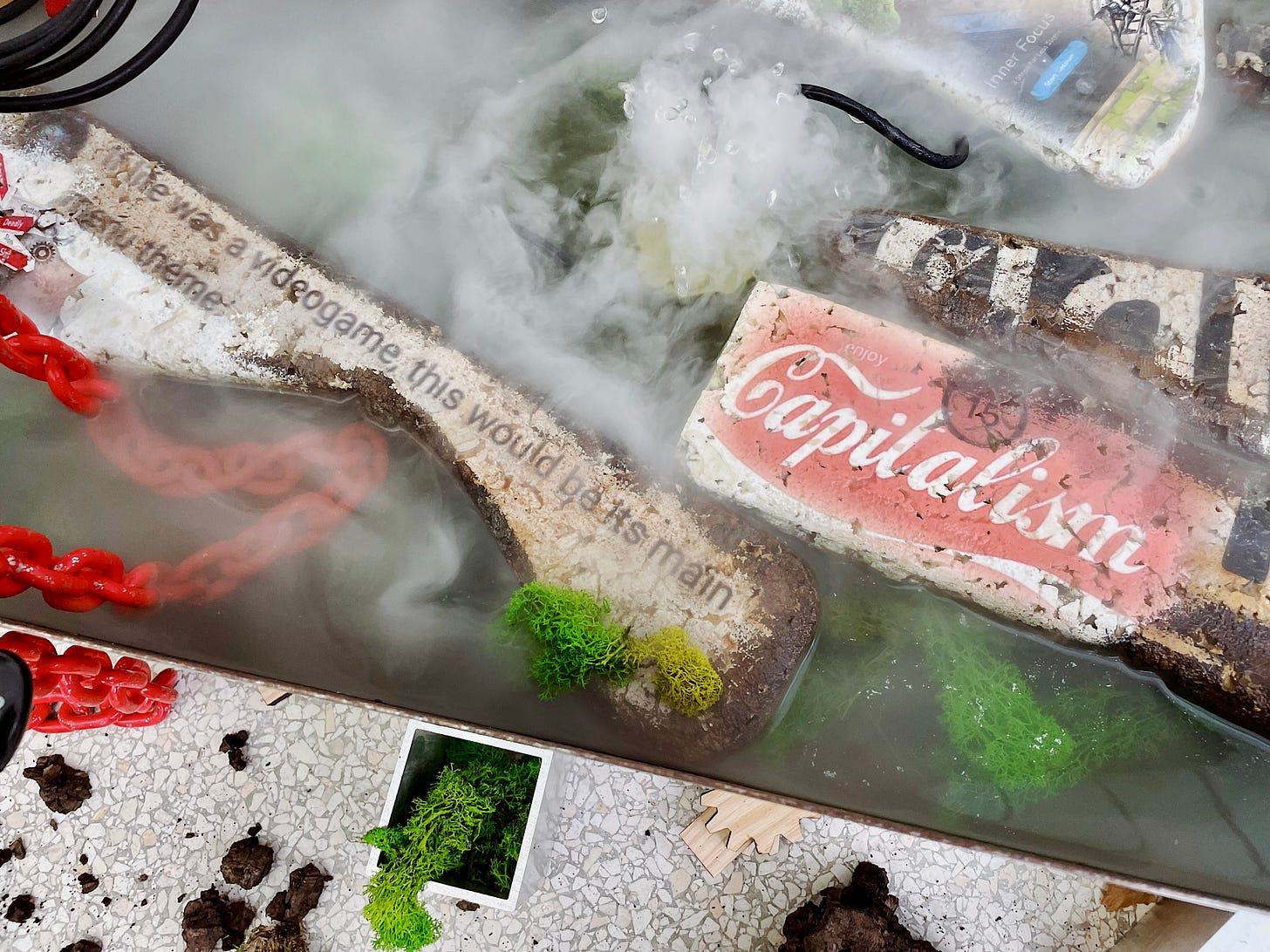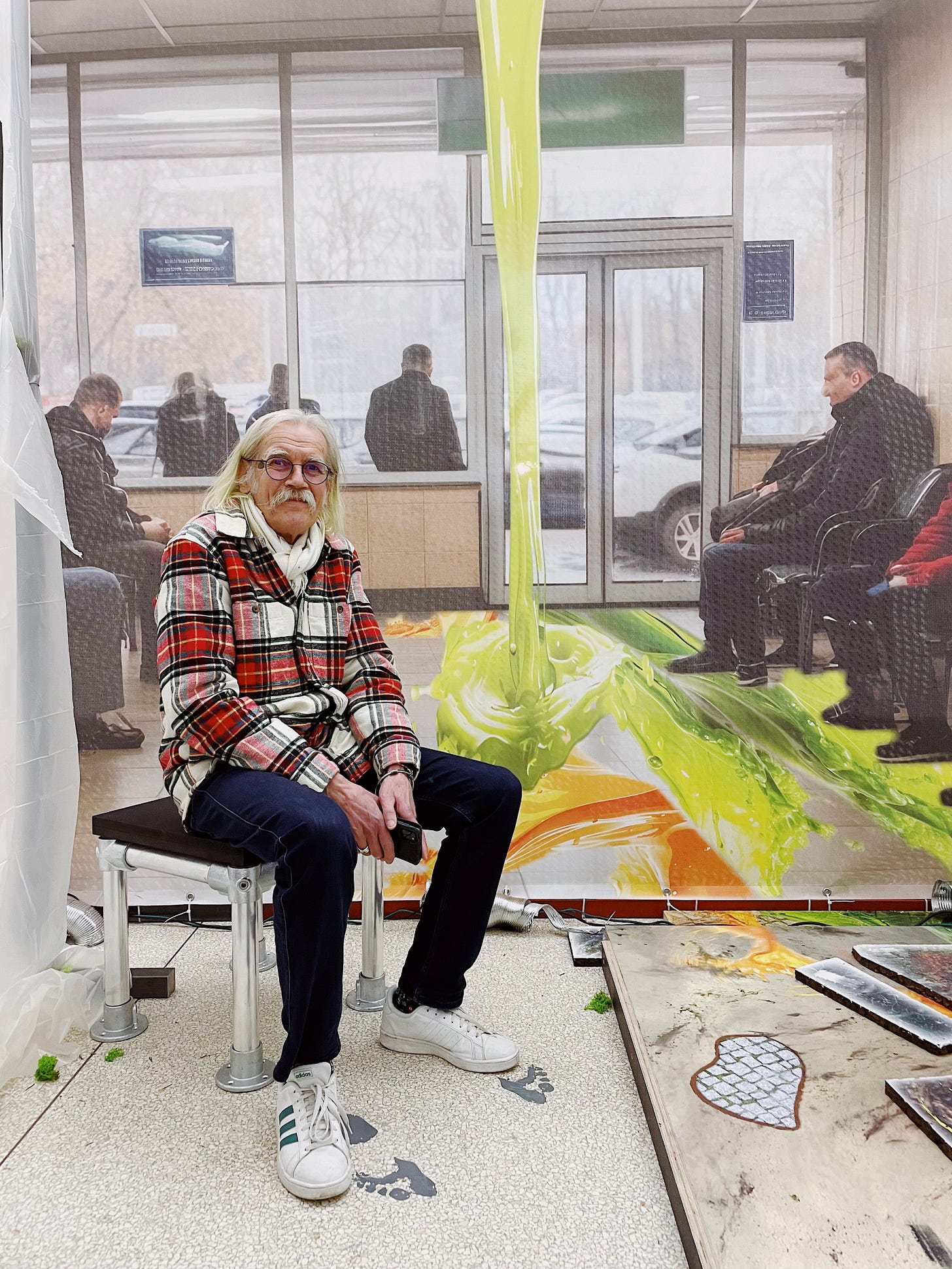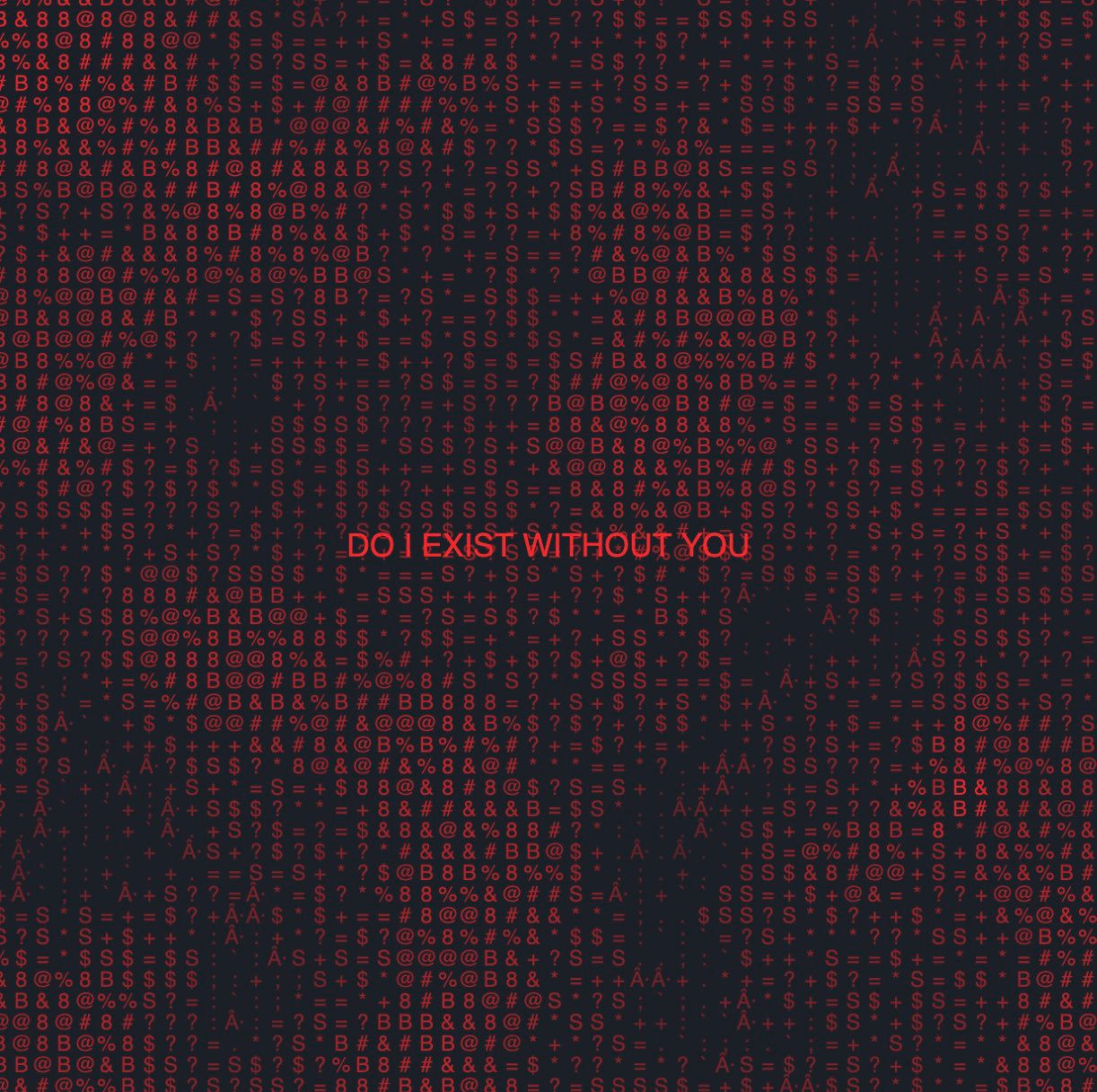Status Update #7: Post-Internet Art Is Dead! Long Live Post-NFT Art!
On Healing Through Fatigue and Endcore
I still remember the art classes in school very well. The art rooms were located in the back part of the school building, and art classes usually took place in the afternoons, which meant we often listened to loud music while painting with our fingers, thinking we were reinventing painting. However, I can’t recall the last time I met my art teacher. We are both sure it was about 10 years ago when we last encountered each other at the Heidelberger Kunstverein. So, we arranged to attend the opening of Jakub Choma's exhibition at the Heidelberger Kunstverein together, since I am currently in southern Germany. The title sounded promising: Healing Through Fatigue. The theme too: Worldbuilding. And the exhibition: Post-Internet Art.
What might have been somewhat exciting 10 years ago now evokes—at least for me—maximal nostalgia. Jörg Heiser already questioned in 2015 what this return to materiality is all about, and here comes Jakub Choma ten years later, setting up a parcours reminiscent of video games in his first institutional solo exhibition. The accompanying brochure to the exhibition indicates that Choma's artistic practice is closely linked to debates surrounding the so-called Post-Internet concept. The website quotes a text by Hito Steyerl from 2013, pointing out that even “physical reality is always permeated by digital logics.” I immediately thought of the text We’re in the Endcore Now by Shumon Basar from 2024:
“Art movements used to last decades. Now internet memes barely last days. Memories are from either ten minutes or ten years ago. Against this ‘Proceleration‘ (the acceleration of acceleration) is the desire to label every micro-cultural moment on the internet (especially on TikTok). Everything is rendered as a ‘___core.‘ If it isn’t a ___core, it didn’t happen. Cores are like screenshots as trends. And once the core is indexed, archived — you simply move onto the next one, which will come along later on the same day, probably.”
I then wondered whether it is even okay to show an exhibition on Post-Internet Art and present findings from ten years ago as, yes, worth discussing. While we walked through the exhibition, my art teacher reminded me that he couldn’t just walk through an exhibition; he had to think about what it all means and whether it’s good. I said that I also do something in this direction professionally and that we urgently needed to take photos to document that we had met again at the Heidelberger Kunstverein. Like good Post-Internet Art has always done, this exhibition also provides a lot of photogenic motifs. The visit to the exhibition was okay and fun, especially since I am currently on a trip to the past in my hometown, as is often the case when returning home and encountering people from what feels like three different lives.
In my hometown, I encountered several people who asked me what I was doing, and I mentioned something about NFTs and feminism. Then I was asked if NFTs would even exist anymore. After seeing the exhibition Healing Through Fatigue, I will henceforth say: Post-Internet Art Is Dead! Long Live Post-NFT Art!
Why should there be no more NFTs? NFTs are a solution for selling digital art, and digital art will continue to exist. For sqd.zip, I recently wrote a text about NFTs and the supposed end of the revolution. In it, I discuss, among other things:
“When thousands of euros are spent to customise bags with bag charms and keychains, millions of dollars for unique profile pictures on social media, and thousands of pounds for exclusive digital fashion, the need to stand out with status symbols seems almost insatiable. We need a continuation of the NFT revolution. A second season, where it’s no longer just about new distribution methods but about the contextualisation of new ideas and creations. For this, we need curators, new platforms, and institutions that can keep pace with the speed of the internet while also bringing clarity to the flood of information in the fields of art, music, and fashion.”
The speed seems to be the problem. As Shumon Basar noted, art movements used to last decades. Institutions are not equipped to deal with a new trend seemingly every 10 minutes. And what are the criteria for the durability of trends, anyway?
For a few days now, the NFT space has been in an uproar because over 100,000 EUR was paid for an NFT by Botto at the auction at Verse, which is perceived as a meme. Another 20 NFTs by Botto were auctioned for around 20,000 EUR. In a text for Verse, I explained Botto and the NFTs, and in it, I write among other things:
“When Mario Klingemann sent A.I.C.C.A., a fluffy robot dog, out into the world to critique art in museums and galleries, I was somewhat irritated: Why does it have to be a dog (I love dogs) that ‘poops out‘ critical texts about art written by AI? Isn't that disrespectful to art critics (including myself)?
And now again: What Mario Klingemann has created with Botto is unsettling. Botto is a decentralized autonomous AI artist created in 2021 by the software collective ElevenYellow and the German artist Mario Klingemann. One might wonder: Why do we need an AI artist that produces art that one could have made oneself? If not even better...
(…)
In recent weeks, there has been a lot of discourse on Twitter and in international media regarding the call to boycott the AI auction at Christie’s in New York and the sales exhibitions of Botto and Keke in London. There was talk of the ‘end of humanity's monopoly on art‘ (@CSA2D7). It was speculated that galleries would have their own ‘agentic artists‘ in the future, perhaps even entire rosters, allowing them to keep 100% of the revenue (@eli_schein). There was a discussion about whether the point was that all of Botto's works are mediocre (@_deafbeef), after surprise was expressed that Botto's works look like a p5.js sketch from a second semester student (@zachlieberman). Or do they look more like they were programmed by a five-year-old? (@quasimondo). There was also mention of ‘backstory art,‘ where the art itself is not important but serves more as a token to the story of how the art was created (@zachlieberman).
Well, conceptual art and good marketing have existed long before art began to be sold on the blockchain. The foundation for conceptual art was laid by Duchamp with his readymades and Sol LeWitt with his writings. In conceptual art, the idea is central. Botto is about the concept of turning a machine into an artist. The ultimate goal: full autonomy. Along the way, discussions will continue: How is art evaluated? What is good art? Why is an artwork historically relevant? Is art created with technology evaluated differently? What is the role of the artist in the age of artificial intelligence? How are monetary and cultural values created?”
I don't know how to solve the problem that the traditional art world seems to still be engaged with Post-Internet Art while the new online art world is already at Post-NFT Art, and there aren't many points of contact between the two worlds. I have some ideas about it, but... I have to wrap this up now because I've been looking forward to watching the lecture by K Allado-McDowell titled On Neural Media on YouTube all day, and it’s already quite late.
Love,
Anika






A thoughtful consideration of a hot topic. Thanks, Anika. You can read my take on Botto and AI artists here: https://makingandmeaning.substack.com/p/the-new-mavericks